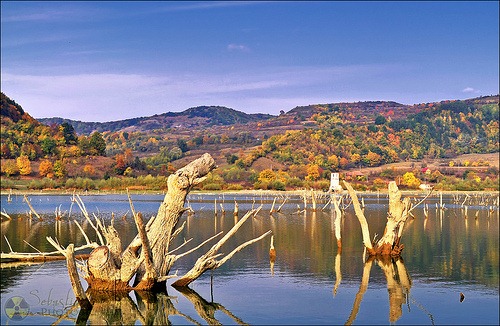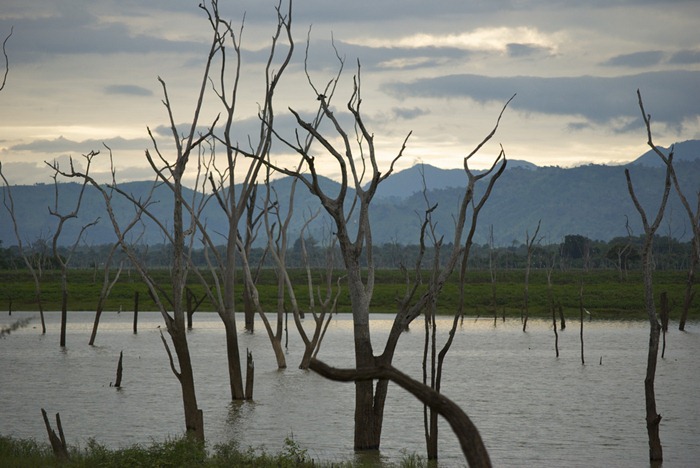Submerged forest is a term used to describe the remains of trees (especially tree stumps) which have been submerged by rising sea level. These forests have been usually buried in mud, peat or sand for several thousand years before being uncovered by sea level change and erosion. Here are 7 incredibly scenic submerged forests from around the world.
1. Lake Kaindy, Kazakhstan

Kaindy Lake is a 400 meter long lake in Kazakhstan that reaches depths near 30 meters in some areas. It is located 129 km from the city of Almaty and is 2,000 meters above sea level. It was created by the result of an enormous limestone landslide. The track to Kaindy lake has many scenic views to the Saty Gorge, the Chilik River valley and the Kaindy gorge. Dried-out trunks of submerged Picea schrenkiana trees rise above the surface.

2. Lake Bezid, Romania

Lake Bezid situated in Romania's Transylvania region was artificially created after the entire village of Bezid was flooded, leaving the houses at the bottom of the lake and only the local church tower and trees still visible, looming over the lake. Apparently, a dam was built around 25 years ago to prevent the recurrent flooding of the river valley. Needless to say, the inhabitants of the old village had to be moved away when their homes were drowned.
3. Lake Periyar, India

Periyar Lake in the Indian state of Kerala is another sunken cemetery for trees whose putrefying trunks rise out of the water as if clawing for divine mercy. Covering an area of a 55 km², the lake is fed by the Periyar River and in turn supplies water for the Vaigai River in Tamil Nadu via a tunnel through the Western Ghats. Still, the dead trees betray the lake's recent past as a living forest.



4. Udawalawe Reservoir, Sri Lanka

The twisted, closely-packed boughs standing in Sri Lanka's Udawalawe Reservoir are similar visual reminders of the extent of the forest cover that lay here before the construction of the dam that brought this body of water into being. The deep reservoir is constantly replenished by the never-drying Walawe river, which itself draws most of its water from wooded higher ground and plains.


5. Lake Volta, Ghana

Myriad dead trees emerge from Ghana's Lake Volta, which has the largest surface area of any reservoir on earth. The lake was formed by the Akosomba hydroelectric Dam, which provides power for much of the country. Completed in 1965, it forced the relocation of 78,000 people to new settlements, along with 200,000 of their animals, while some 120 buildings and countless small residences were destroyed.


6. Lake Caddo, Texas

Caddo Lake is a 25,400 acre (103 km²) lake and wetland located on the border between Texas and Louisiana, in northern Harrison County and southern Marion County in Texas and western Caddo Parish in Louisiana. The magnificent canopy reflected in the still waters beneath is that of Cypress trees, for this is Lake Caddo on the Texas-Louisiana border, home to the world's largest Cypress forest.


7. Kampong Pluk, Cambodia
The water-dwelling trees of Kampong Pluk are mangroves, and their flooded jungle habitat is home to a variety of wildlife, including crab-eating macaques, as well as humans who harvest shrimp and live in houses that tower in the air atop stilts.


